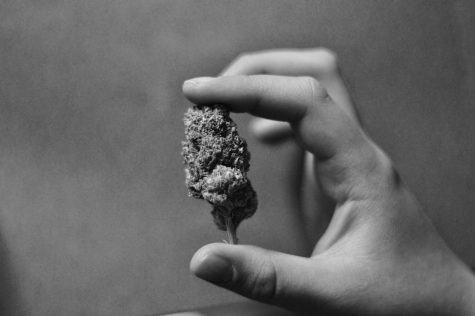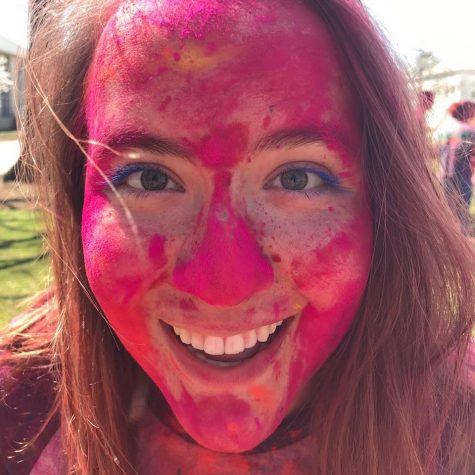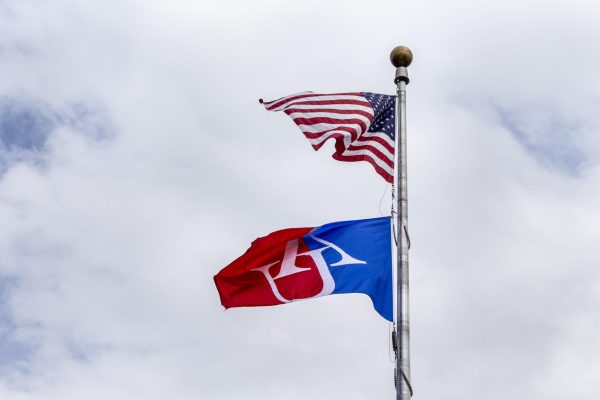Burnt Out Policy
Students speak up for social action
Photographs by Anonymous
On a humid September evening, freshman Katherine and her friends decided to smoke a joint on American University’s campus. Shortly after lighting up, they heard someone shout “AU Police!”
They assumed it was just a student trying to mess with them and continued puffing out smoke. It wasn’t a joke. Campus police searched their belongings, confiscating marijuana and paraphernalia.
“A couple of us thought we were literally going to get arrested that night,” Katherine said. Campus police, however, did not report the incident to Metropolitan Police.
A few weeks later they received an email from the Office of Campus Life mandating they schedule a date for their disciplinary hearing. At the hearing, Katherine, who was caught with ten grams of marijuana, explained her story.
AU’s Office of University Communications failed to respond by time of print.
“They basically did a standard probation for a first time drug offense,” Katherine said. “For the rest of the semester, you can’t get caught doing anything on campus: drinking, smoking, anything like that. And if you do, you can get suspended or expelled.”

Katherine is just one of many students at AU who has been caught smoking and possessing marijuana on campus. Seven states and the District have legalized recreational marijuana. Twenty-nine states and D.C. have legalized medical marijuana. But college campuses still have not.
According to AU policy, first time sale, distribution, manufacture, use, or possession of illegal drugs and illegal drug paraphernalia can result in anywhere from disciplinary probation to dismissal from the university. Juxtapose this with first time alcohol violations, where the most severe punishment a student can receive is probation, an alcohol education program, or community restitution hours. Suspension or dismissal are only considered after repeated alcohol violations.
AU transitioned into becoming a “damp campus,” in 2017 by allowing alcohol in only dorms where all residents are 21 or older. This policy change was done in an effort to make on-campus housing more desirable to upper classmen and to reduce dangerous drinking incidents off-campus.
Even though D.C. legalized marijuana, AU’s policy still “prohibits the unauthorized possession, use, manufacture, distribution and sale of medical marijuana and possession and use of marijuana in any quantity,” according to American University Drug Policy.
“Right now, most campuses around the U.S. treat marijuana as more harmful than alcohol, which is simply not true,” said Jake Agliata, Regional Outreach Coordinator at the Students for Sensible Drug Policy. “We believe that if schools are going to have policies on the books for marijuana and alcohol, they should be equalized.”
On Feb. 26, 2015, D.C. formally legalized possession of up to two grams of marijuana for those 21 and older. The law also stipulates that money cannot be exchanged for marijuana and use of marijuana is strictly limited to private property only. The D.C. Metropolitan Police Department highlights in its webpage on “The Facts on DC Marijuana Laws,” that marijuana is still illegal to possess and use according to federal law, so possession or use of marijuana on federal property in D.C. can still be treated as a federal crime.
Federal law is also the primary driving force behind why universities have yet to adopt progressive marijuana policies.
According to the Drug Free Schools and Communities Act (DFSCA) of 1989, any college campus that permits the use of marijuana by any staff, faculty or student will risk losing all federal funding for that school. Catholic University, Howard University and George Washington University all have policies prohibiting marijuana possession and use in their residences due to the DFSCA.
“[Schools] are afraid of losing federal funding if they move towards more lenient marijuana policies,’ Agliata said. “Schools do have the ability to equalize marijuana and alcohol penalties even under the DFSCA, since the Act only stipulates that schools need to have a marijuana policy on the books… We simply need to educate college administrations that they don’t need to fear losing federal funding.”
According to Kate Bell, legislative counsel for Maryland and D.C. at the Marijuana Policy Project, “If marijuana is descheduled, it would no longer be an ‘illicit drug’ under DFSCA, and its use by students 21 and up would no longer be illegal under federal law.”

“States would be free to set their own marijuana policies without federal interference, and there would be other positive legal changes, including medical marijuana patients being able to seek protection under the Americans with Disabilities Act,” Bell said.
Strong opposition to marijuana legalization by U.S. Attorney Jeff Sessions has recently gained ground, including threats to Obama-era guidance that has generally allowed states to legalize marijuana without federal interference. Social stigma surrounding marijuana is also greatly rooted in racial and class.
“We knew we couldn’t make it illegal to be either against the war or black [people]. But by getting the public to associate the hippies with marijuana and blacks with heroin and then criminalizing both heavily, we could disrupt their communities,” said an unknown official in the Nixon Administration, as used in the 2016 documentary 13th.
According to a 2016 report on the racial and ethnic disparity in prisons from The Sentencing Project, harsh drug laws are a major factor for the especially severe disparities that come with drug crimes.
Nellis finds dozens of studies all point to similar explanations for the cause. The disparities come from discriminatory policies and practices that target specific areas and/or people, as well as the role of implicit bias and stereotypes in decision making, structural disadvantages in communities of color, and inequalities in the criminal justice system.
“Race and socioeconomic class play a huge role, as the War on Drugs is largely rooted in racism to begin with,” Agliata said. “For example, despite equal levels of consumption, black people are nearly five times more likely to be arrested for marijuana than white people.”
Stereotypes and misconceptions also play an important role in the way marijuana is perceived.
“Some of the more common stereotypes associated with marijuana are the ‘lazy stoner’ trope, that marijuana makes you slow and dumb,” Agliata said. “There are numerous studies that prove people who use marijuana regularly are not academically impaired by their consumption, and some studies even indicate that students who use marijuana are some of the highest performing students in the country.”

A study conducted by the Massachusetts General Hospital/Harvard Center for Addiction Medicine used MRIs to observe the brains of individuals age 18-25 who smoked marijuana at least once a week. The study found that compared to non-users, users had changes to the gray matter within regions of the brain associated with motivation, pleasure, memory, emotion and decision making.
However, Barbara Weiland, PhD, at the University of Colorado at Boulder recently redid this study, controlling for alcohol consumption. After controlling for alcohol, differences in the brain’s gray matter could not be found.
“There is ample evidence that marijuana is safer than alcohol,” Bell said. “For example, it is not associated with violent behavior like alcohol is, and there has never been a recorded overdose due to cannabis, while many people die every year from alcohol poisoning — so it doesn’t make sense to effectively drive students to drink by treating marijuana more harshly than alcohol.”
Alcohol use among college students is responsible annually for about 1,825 deaths, according to the National Institute of Health.
“I find marijuana to be safer than alcohol, as evident by the numerous transports outside Letts and Anderson on a weekly basis,” Katherine added. “You have so many transports on a weekly basis outside of Anderson and Letts and with people not knowing their limits in terms of alcohol. With marijuana I don’t think you have that problem as regularly at least if at all.”
According to AU’s Annual Security Report, in 2016, AU’s main campus had 521 liquor law violations as opposed to 106 drug violations.
So what can be done to ensure that marijuana rights and punishments are treated more like alcohol on campus?
“Students can and do succeed in changing their university’s policies,” Bell said. “An important thing students can do is vote! The lower turnout rate among young people results in politicians giving less consideration to them than to other constituents who vote in much larger numbers.”
According to Bell, about 45 percent of 18-29 year old citizens voted in the 2012 election, versus 72 percent of citizens 62 and up.
“In general, I think we need to start viewing marijuana consumption as something that many people do regularly and without any sort of impediment into their daily lives,” Agliata said. “If it’s acceptable to come home after a day of class and have a beer, it should be acceptable to come home and smoke a joint.”
Luci Rascher is a first-year student studying international studies.

I'm a sophomore majoring in International Studies and interested in peace and conflict resolution, culinary arts and crunchy food culture, environmental...







